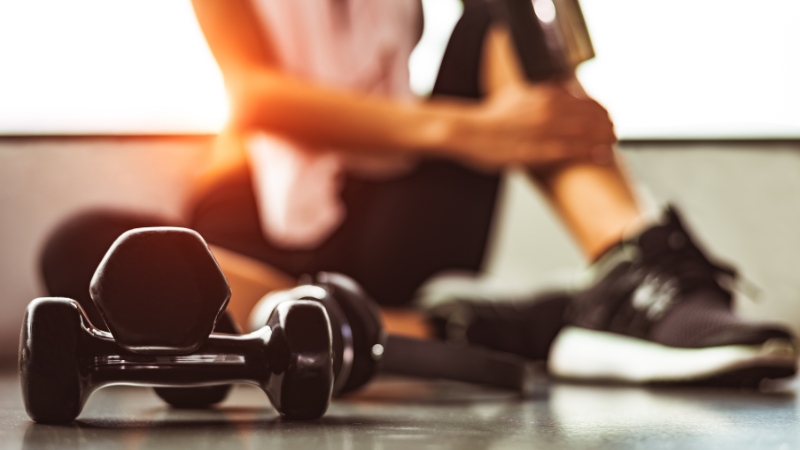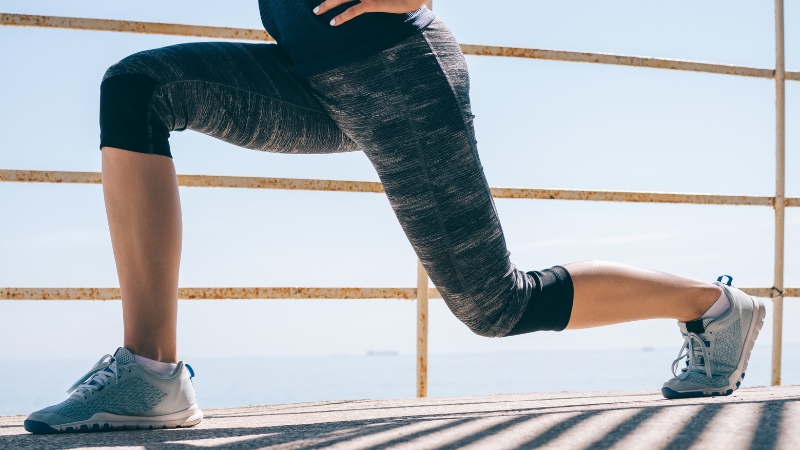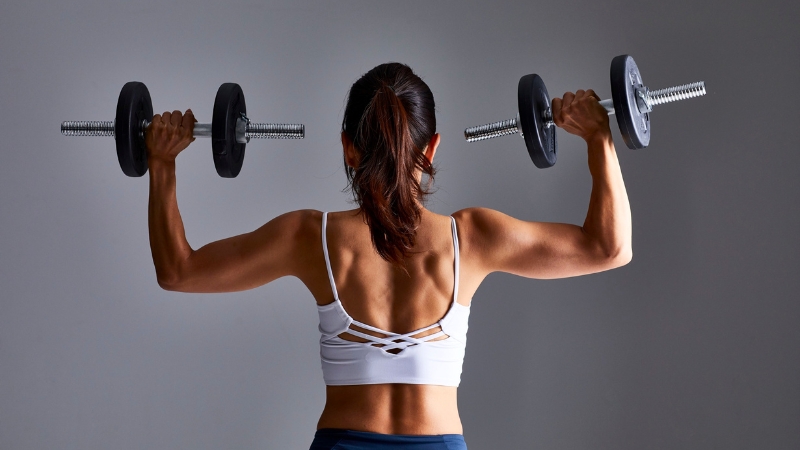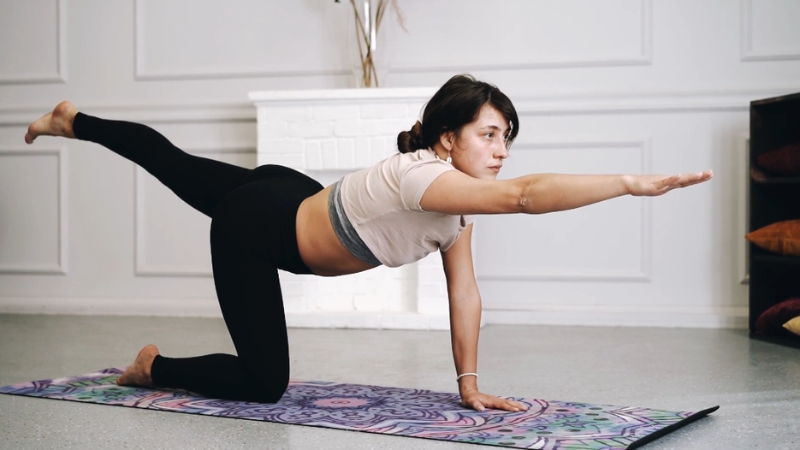
Share Post:
Dealing with knee pain can make staying physically active a challenge.
High-impact workouts often strain already sensitive joints, leading to:
- Discomfort
- Swelling
- Injury
Skipping physical activity entirely, though, can worsen joint stiffness, decrease mobility, and negatively affect cardiovascular health.
Low-impact cardio offers a smarter path forward. These workouts elevate the heart rate and improve circulation while minimizing stress on the knees.
Ideal for individuals dealing with arthritis, past injuries, or chronic joint pain, these movements promote overall wellness without the punishment of pounding pavement or jumping.
Before starting any new exercise regimen, especially with existing health concerns, a conversation with a medical professional is essential.
Table of Contents
Toggle1. Swimming

Water acts as a natural cushion for joints, making swimming one of the most forgiving activities for knee health.
Buoyancy reduces body weight stress on the knees, allowing full-body motion without painful impact.
Freestyle swimming can burn up to 100 calories every 10 minutes, depending on intensity and fitness level.
Movements improve endurance and cardiovascular strength while enhancing muscle tone across the core, arms, and legs.
In addition to physical benefits, swimming promotes relaxation and reduces inflammation through gentle hydrostatic pressure.
Beginners can use kickboards or pool noodles for support, while experienced swimmers may incorporate interval training or different strokes like backstroke and breaststroke.
Key Benefits
- Full-body conditioning without joint compression
- Builds endurance, strength, and coordination
- Effective calorie burn in short time
- Suitable for rehab and active recovery
- Helps regulate breathing and promotes relaxation
2. Elliptical Training
Elliptical machines offer a smooth, fluid range of motion, keeping both feet in contact with pedals at all times. Lack of harsh footstrike protects sensitive knees, making this machine an ideal substitute for running.
Resistance and incline levels adjust easily, allowing users to fine-tune intensity to match endurance and strength goals.
Dual-handle designs add upper body engagement, creating a full-body cardio session. Sessions typically burn 200–400 calories in 30 minutes, depending on pace and resistance level.
Regular use improves cardiovascular health and builds lower-body endurance without wear and tear on knee joints.
Key Benefits
- Adjustable resistance levels
- Full-body motion with minimal stress
- Ideal for home or gym workouts
- Engages glutes, quads, and hamstrings
- Suitable for interval training
3. Rowing
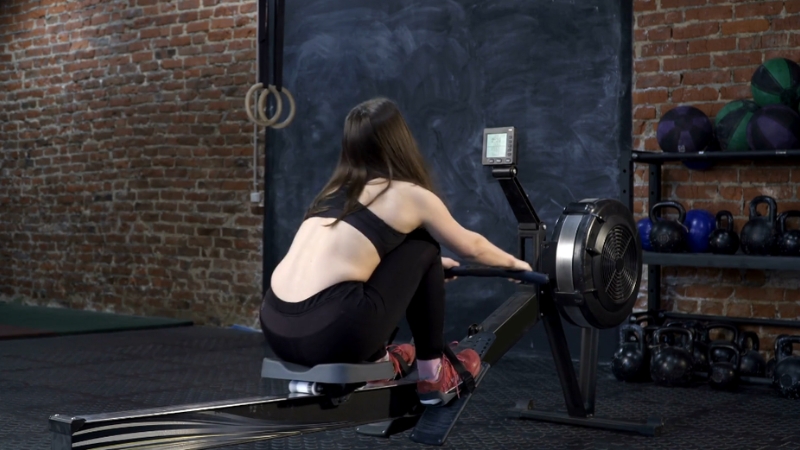
Rowing machines provide a total-body workout that pairs cardio conditioning with strength training.
Unlike treadmill-based exercises, rowing doesn’t put pressure on the knees, as the effort is distributed evenly across the upper and lower body.
Seated position and horizontal movement reduce the risk of joint aggravation.
Each stroke recruits major muscle groups, back, arms, legs, and core, delivering a compound workout with excellent heart rate elevation.
Resistance settings allow for gradual progression. Ideal for improving posture and reinforcing muscle balance between front and back body chains.
Key Benefits
- Boosts endurance and power
- Strengthens core stabilizers
- Great option for indoor training
- Easy to modify for beginners
- Supports weight loss and toning
4. Cycling (Stationary or Outdoor)
Cycling maintains joint flexibility and improves the function of supporting leg muscles. Stationary bikes, in particular, allow precise control over speed and resistance, making them safer for those with compromised knees.
When cycling outdoors, flat terrain is preferred. Raising the seat slightly decreases the angle of knee flexion, easing joint stress.
Spin classes and recumbent bikes offer even more options to suit comfort and experience. This exercise also strengthens the quadriceps, which provide stability to the knee.
For those interested in high-performance equipment, you can shop carbon road bikes to enjoy lightweight efficiency and enhanced ride quality without compromising joint comfort.
Key Benefits
- Builds lower body strength
- Enhances knee mobility
- Helps regulate weight without pounding joints
- Encourages consistent cardiovascular training
- Suitable for all weather and schedules
5. Walking
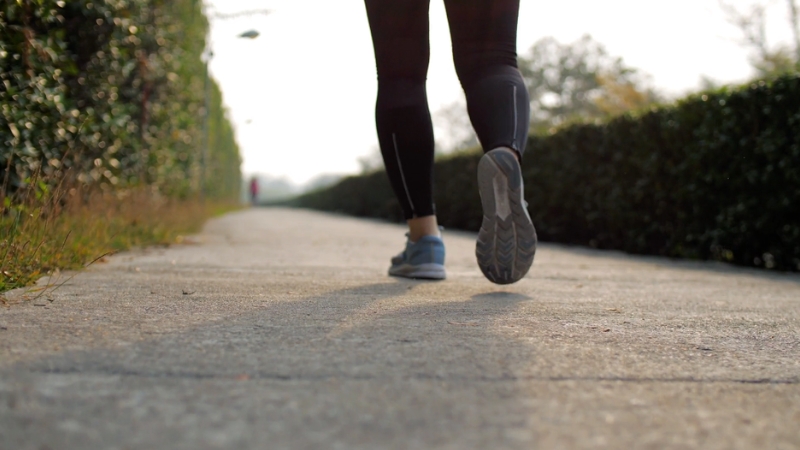
Walking is a low-barrier activity suitable for most individuals with mild to moderate knee discomfort.
Brisk walking on even surfaces promotes blood flow, burns calories, and strengthens muscles around the knees.
Intensity can be increased through incline walking, adding light hand weights, or using trekking poles for added balance.
Consistency with walking helps reduce stiffness and keeps joints lubricated. Wearing proper footwear and maintaining good posture helps prevent strain or additional discomfort.
Key Benefits
- Improves circulation and metabolism
- Encourages daily movement without equipment
- Strengthens stabilizing muscles
- Can be paired with mindfulness and stress relief
- Excellent way to build a healthy habit
6. Step-Ups on Aerobic Bench
@shanas_fitness Step up on the bench seems to work better for me especially targeting glutes, I feel it less on the lower back. Definitely beginner friendly if you are trying it out first time 🏋️♀️💪🏽 #stepup #stepupsforglutes #GymContent #glutesworkout #fyp #gymgirlsoftiktok #happygirl #browngymgirl #consistency #legday @Oner Active ♬ original sound – shanas_fitness
Step-ups target glutes, hamstrings, and calves while providing a cardiovascular challenge. Movement mimics stair climbing but can be made safer through a height-adjustable bench.
Slow and controlled steps reduce pressure buildup in the knee joint.
Form matters more than speed. Keeping knees aligned with toes and avoiding overextension minimizes risk.
Hand support, such as a railing or wall, may be used when needed for balance.
Key Benefits
- Activates stabilizing muscles
- Improves balance and coordination
- Elevates heart rate efficiently
- Requires minimal equipment
- Easy to scale by adjusting height
7. Pilates
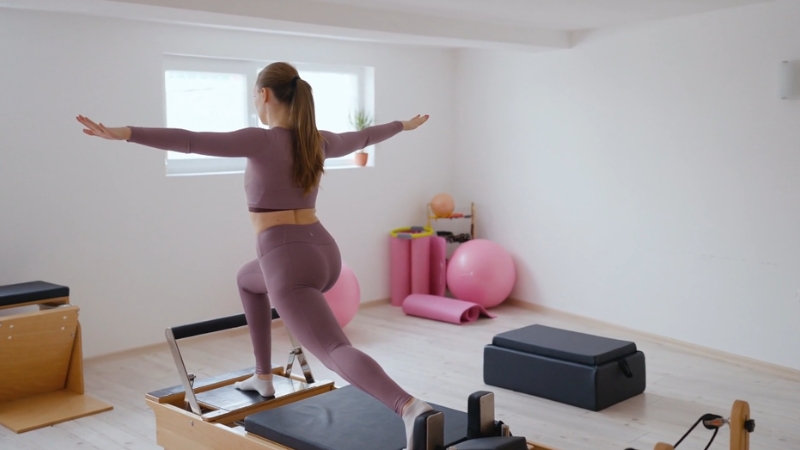
Pilates enhances mobility through a series of controlled, precise movements focused on alignment, breath, and muscle activation.
It emphasizes the deep core muscles that help stabilize the spine and pelvis, an essential component for reducing stress on the knees.
Both mat-based and reformer-style Pilates offer options suited to every level.
Movements avoid jarring force and can be modified using props like resistance rings or stability balls.
Avoid poses that require kneeling or prolonged single-leg balance if pain is present.
Key Benefits
- Promotes controlled strength
- Reinforces posture and joint protection
- Increases flexibility without strain
- Encourages body awareness and breathing control
- Safe for gradual rehabilitation
8. Yoga
Yoga holds profound benefits for both body and mind, fostering strength, flexibility, and tranquility. Let us make Yoga a part of our lives and further wellness as well as peace. Sharing a set of videos depicting the various Asanas. https://t.co/Ptzxb89hrV
— Narendra Modi (@narendramodi) June 16, 2023
Yoga nurtures mobility and mental clarity through sequences that can be tailored to all body types and needs.
Flexibility improves through regular stretching, while slow transitions promote joint control.
Knee discomfort can be addressed with pose modifications, such as using bolsters or folding the mat for padding.
Consistent practice builds strength in supporting muscles and increases proprioception, helping prevent future injury.
Benefits also extend to reduced stress, improved sleep, and enhanced focus.
Key Benefits
- Builds flexibility gradually
- Supports mental well-being
- Can be performed with minimal space
- Improves posture and muscle balance
- Enhances breathing and stress control
Benefits of Low-Impact Cardio for Knee Health
Knee issues can severely limit daily movement and discourage physical activity.
Despite discomfort, staying active is crucial for long-term joint health and overall well-being.
Low-impact cardio offers a safer, more manageable option for those dealing with knee pain. It supports physical function, strengthens muscles around the joints, and improves mental clarity.
Reduced Risk of Injury
Gentle, controlled movements help avoid sudden strain. High-impact workouts often place abrupt force on the knees, which can worsen existing injuries or cause new ones.
Low-impact alternatives help ensure each motion supports the body rather than stresses it.
Key Advantages
- Reduced joint pressure during exercise
- Smooth motion helps prevent ligament and tendon strain
- Emphasis on proper form supports body alignment
- Lower likelihood of setbacks or prolonged recovery
Enhanced Mood and Mental Health
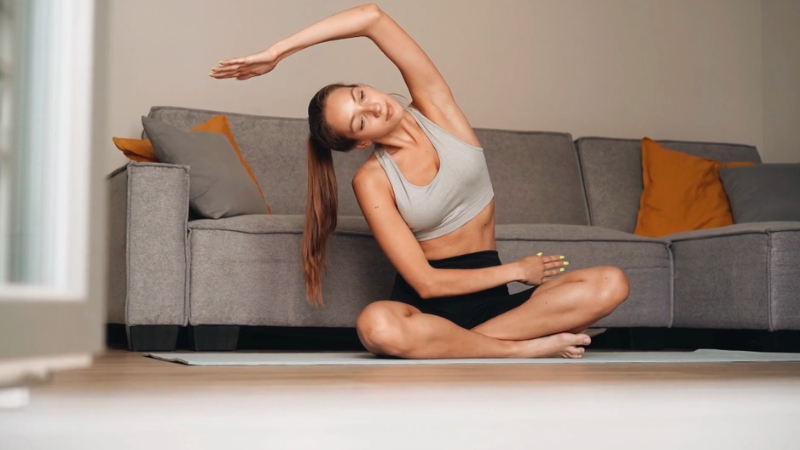
Staying active benefits more than just muscles—it also elevates emotional well-being.
Regular low-impact cardio releases endorphins, often referred to as “feel-good” hormones. These natural chemicals lift mood and combat mental fatigue.
Key Advantages
- Promotes a positive mindset through endorphin release
- Boosts circulation, supporting clearer thinking
- Helps manage anxiety and symptoms of depression
- Encourages better sleep patterns and energy levels
Improved Balance and Stability
Maintaining control during movement becomes more difficult with weak stabilizer muscles.
Low-impact exercises like yoga and Pilates teach the body to move deliberately, activating the core and correcting muscle imbalances that can cause instability.
Key Advantages
- Strengthens muscles responsible for posture and joint alignment
- Reinforces control during standing, walking, and climbing stairs
- Enhances proprioception—body’s sense of positioning
- Helps reduce risk of falls or missteps
Increased Cardiovascular Health and Muscle Strength
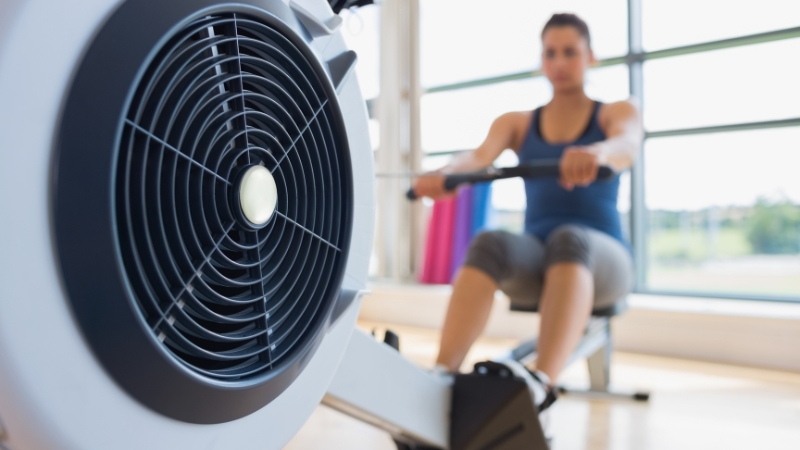
Effort remains high even when joint impact stays low. Effective low-impact workouts can elevate heart rate while training muscles that surround and support the knees.
Key Advantages
- Strengthens key lower-body muscle groups (quads, hamstrings, calves)
- Improves blood flow, accelerating recovery and reducing inflammation
- Boosts endurance and lung capacity
- Helps regulate blood pressure and cholesterol levels
Summary
Low-impact cardio creates a sustainable, safe path for those managing knee discomfort.
Regular movement leads to stronger joints, improved cardiovascular health, and better mental well-being.
Consistency paired with proper technique allows progress without setbacks. Gentle doesn’t mean ineffective—it just means smarter.
Related Posts:
- Top 7 Cardio Workout Models Swear By for a Lean Physique
- Top 12 Dumbbell Chest Exercises for Home Workouts
- Top 5 Low-Impact Exercises to Strengthen Your Spine
- Top 12 Exercises That Help Women Over 40 Stay Lean…
- Forget HIIT—Why Low-Intensity Cardio Might Be Better…
- Cardio vs. Yoga - Which is Better for Mental Health…







